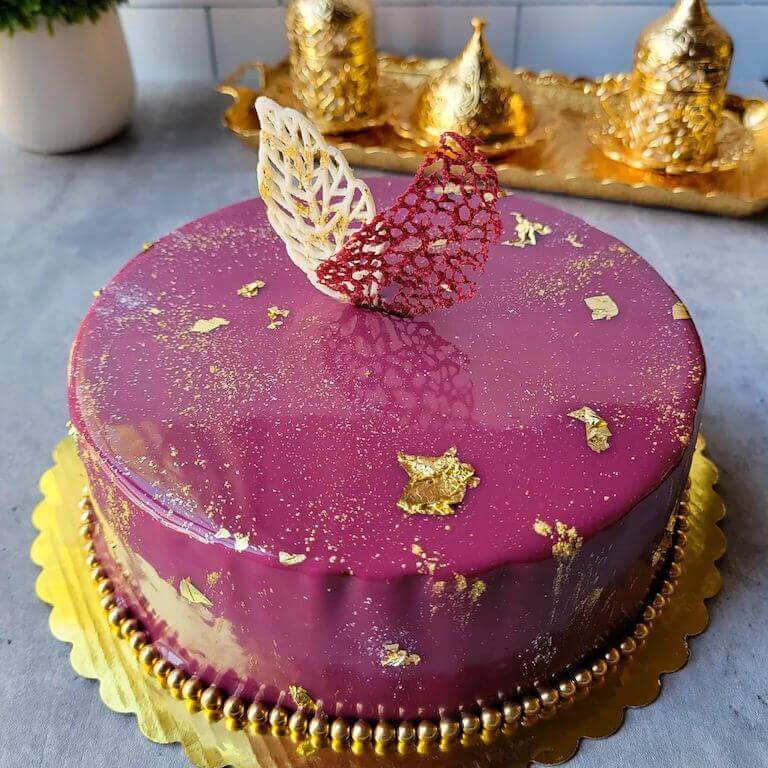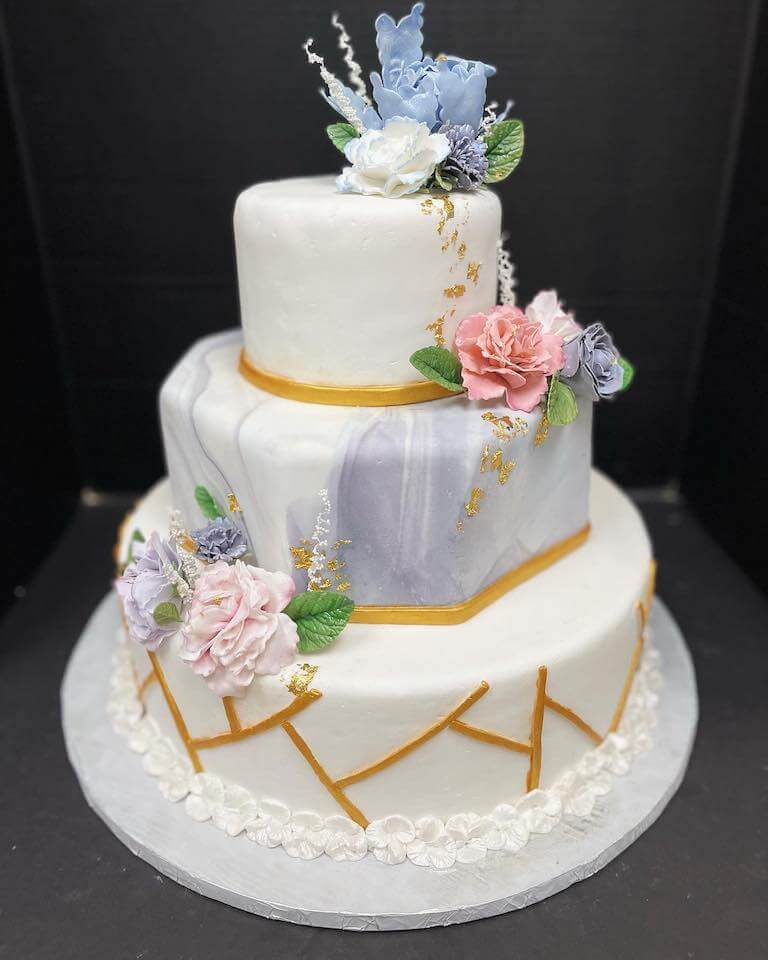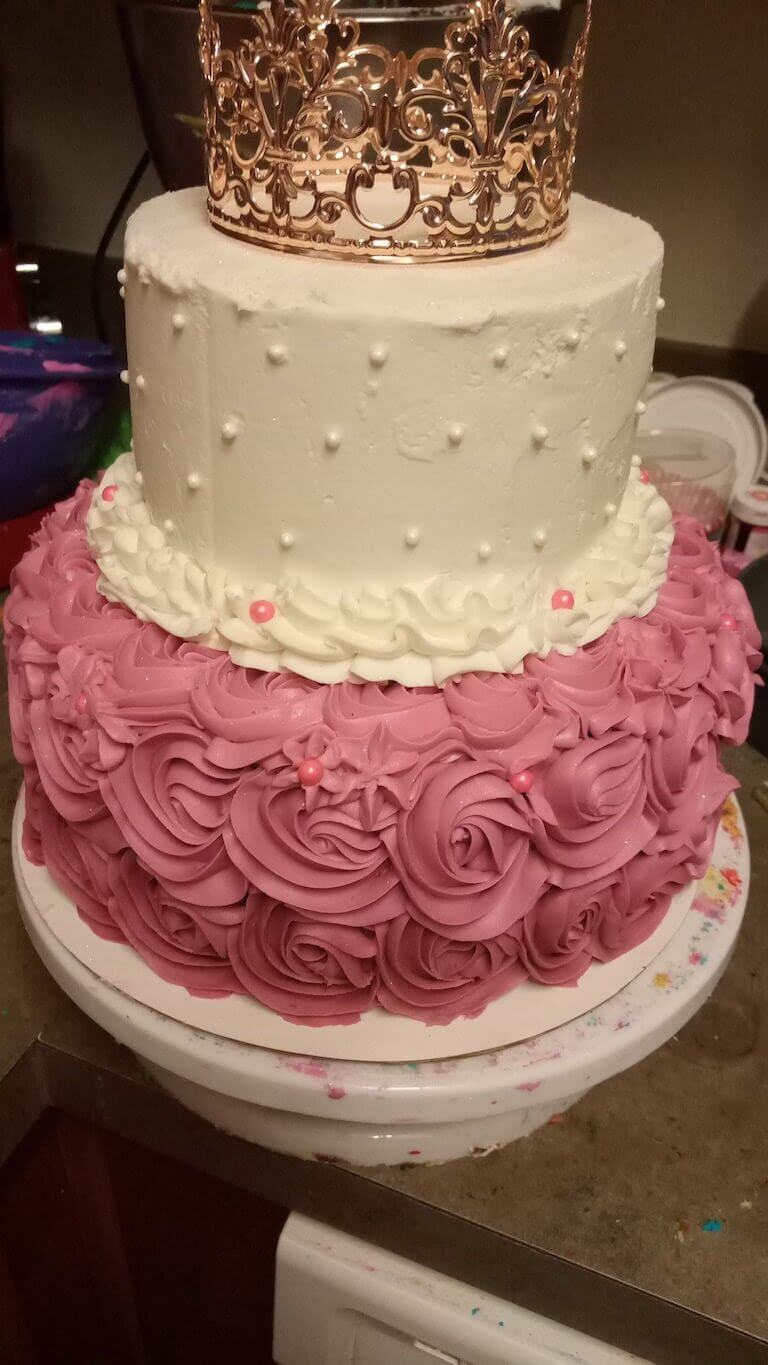You bake and decorate a cake, and it looks nice—from a distance! But when you lean in close, you can’t help but notice the flaws. A bit of uneven frosting. The left side dipping just a touch below the right. Piped lettering that’s a little shaky. Does that say “Mary” or “Marv?”
Proper education can make the difference between cakes that are good enough for friends and family, and cakes that are good enough to sell.
In the cake decorating class included as part of Escoffier’s Baking & Pastry curriculum, students can explore professional techniques that help bring their cakes up to that higher standard. Here’s what you could discover.
Mixing Batter for Proper Texture
A beautiful cake begins before it even goes into the oven.
When you stack sponges on top of each other, the weight of the top layers can squish the lower layers, making the cake look deflated or uneven. Sponges must be sturdy enough to hold their shape, but light enough that don’t flatten the bottom tier. Plus, they need to taste delicious!
A properly mixed batter is crucial to the final look and texture of your creation. In cake decorating classes, you may learn the best methods for combining your ingredients. Creaming, for example, involves beating room temperature butter and sugar together until they’re light and fluffy, and then adding eggs one at a time. Then you add dry ingredients and any liquid ingredients. This technique incorporates air into your batter to help it stay light.

A mirror glaze finish by Alexis G., Escoffier student and owner of Galadriel’s Goods
Assembling Sponges for the Perfect Canvas
What happens after you pull your sponges from the oven? If you try to frost a warm cake, you’ll be faced with melting frosting, crumbling cake, and a big goopy mess. So the cooling stage is critical! But when do you tip the layers out of the tins, and how long should you let them cool? Should you put them in the freezer before assembly and decoration? These are all concepts you can explore–and practice!–in a cake decorating class like Escoffier’s.
Next, there’s the leveling. Most cake sponges will round slightly as they rise. But if you try to stack them with rounded tops, you’ll get a wobbly, unsteady cake. In cake decorating classes, you may learn techniques for leveling your sponges so they’ll lay flat on top of each other.
You may also discover some tricks that the experts use for extra stability. A sturdy sponge is great, but if you’re stacking five tiers high, you’ll probably need a little extra help! Dowels and platforms can spread out the weight and prevent your cake from collapsing on itself.

Escoffier Austin pastry arts student Jacey M. and team’s wedding cake final project
Creating a Smooth Frosting Surface
The difference between a mediocre cake and a showstopper starts with a beautifully smooth surface. In a cake decorating class, you may explore different types of frostings and coatings like buttercream, royal icing, and fondant, and when to use each. You may also experiment with food coloring to create the perfect color combinations.
Then there’s the all-important crumb coat—a thin layer of icing that keeps crumbs from marring the cake’s final texture when you add the final decorative layer of frosting.
Escoffier pastry arts student Tara Steinbach says that she learned the proper way to apply a crumb coat and use an offset spatula for a beautiful, smooth finish in the Cake Design and Decoration class at Escoffier.
“There’s so much about the production of cakes that has been eye-opening. I had some huge epiphanies about [simply creaming the butter and sugar]. I don’t think I was properly doing it [before]. And I can see the enormous difference between a professional and home cook, just knowing the proper way to do these most basic things.”*
Tara S., Escoffier Online Baking & Pastry Student and Owner/Baker, Andy’s Artisan Bread
The Finishing Touches: Adding Decorations and Embellishments
Trends in cakes come and go, but there are certain cake decorating techniques that have withstood the test of time.
Basket weaves, delicate latticework, fine line piping, dots, and lettering are popular techniques that add dimension and visual interest to a cake. Leaves, rosettes, and other flowers bring a natural touch to your design, and are particularly popular in wedding cakes.
All of these skills require a steady hand and a great deal of practice. In cake decorating classes, students may receive instruction in all of these techniques. Then they just have to practice until they get them right.
Go Cake Crazy at Escoffier
Wondering how you can explore all of these techniques (and so much more!) without quitting your job or going to baking and pastry school full-time?
With Escoffier’s online programs, you could study baking and pastry from your home kitchen. In the online cake decorating class included in the curriculum, you can practice baking sponges, getting those layers just right, smoothing out the icing, and decorating to your heart’s content.

An embellished cake by Kimberly K., Escoffier student and owner, SugarFoot’s Eats & Sweets
To find out more about what you could learn in Escoffier’s Boulder, Austin, and online baking and pastry programs, contact us today!
Read more about the world of cakes and pastry in these articles:
- How to Become a Cake Decorator
- 6 Pastries Every Professional Baker Should Know How to Make
- What Are the Baking and Pastry Arts…and Is It a Career For You?
*Information may not reflect every student’s experience. Results and outcomes may be based on several factors, such as geographical region or previous experience.

